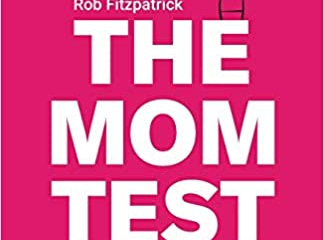In the fast-paced realm of product management, the backlog stands as a dynamic repository of ideas, features, and enhancements. Yet, taming this ever-growing beast is a challenge every Product Manager faces. Drawing from my 13+ years of experience in the field, I’ll unravel strategies to navigate the complexities of product backlog management, ensuring a streamlined and efficient development process.
Understanding the Backlog Landscape: A Personal Insight
In my early days as a product manager, the backlog felt like a monster, a labyrinth of features with unclear priorities and dependencies. My team was lost and unsure of what to work on next, constantly shifting gears, and firefighting the latest request instead of proactively shaping the product.
Over time, I learned valuable lessons about the evolving nature of backlogs. On one project, a seemingly simple feature ballooned into a complex undertaking due to poor initial estimation and unclear requirements. This experience highlighted the need for meticulous refinement and clear user stories.
Another project involved managing a backlog for a diverse group of stakeholders, each with their own priorities and agendas. Balancing their needs while maintaining a focus on user value and business goals became a constant negotiation.
Prioritization Pitfalls and How to Avoid Them
Prioritization is the cornerstone of effective backlog management. In my experience, the most common pitfalls include:
- Misaligned priorities: Focusing on features that don’t align with user needs or business goals, leading to wasted effort and missed opportunities.
- Short-sightedness: Failing to consider long-term impact and focusing solely on immediate wins, resulting in unsustainable product development.
- Lack of transparency: Failing to communicate priorities clearly to stakeholders, leading to confusion and frustration.
Practical Tips for Effective Prioritization:
- Embrace frameworks: Use frameworks like MoSCoW (Must-have, Should-have, Could-have, Won’t-have) or RICE (Reach, Impact, Confidence, Effort) to guide your decisions.
- Gather data: Utilize user research, market analysis, and stakeholder feedback to understand priorities.
- Communicate effectively: Clearly communicate priorities to stakeholders and explain the rationale behind your decisions.
Refinement: The Art of Crafting User Stories
Refinement transforms the backlog from a chaotic mess into a clear roadmap. I’ve found the user story to be the most effective tool for this purpose.
A well-crafted user story:
- Captures the “who,” “what,” “why,” and “how” in clear, concise language.
- Provides context and acceptance criteria to ensure everyone understands the desired outcome.
- Serves as a blueprint for development and facilitates communication between stakeholders.
The Power of Refinement:
In one project, a vague backlog item resulted in confusion and wasted effort. By crafting a clear user story, we were able to focus on the essential elements, ship the feature on time, and exceed user expectations.
Balancing Act: Meeting Stakeholder Needs
Balancing diverse stakeholder needs is a delicate act. I’ve learned to:
- Actively listen to each stakeholder’s perspective and concerns.
- Clearly communicate the product vision and priorities.
- Find common ground and negotiate compromises when necessary.
- Utilize data and user research to support my arguments.
Tools and Technologies for Streamlined Backlog Management
Several tools and technologies can facilitate efficient backlog management. Based on my experience:
- Jira: Popular for its agile framework and robust features.
- Trello: Simple and visually appealing, ideal for small teams.
- Asana: Offers task management and collaboration features.
- Productboard: Focuses on user research and prioritization.
Continuous Improvement: Iterative Backlog Management
Backlog management is an ongoing process. I encourage continuous improvement through:
- Regular grooming sessions: Reviewing and refining the backlog with stakeholders.
- Monitoring key metrics: Tracking backlog size, lead time, and velocity to identify areas for improvement.
- Experimenting with different strategies: Adapting to new challenges and opportunities.
A Case Study in Iteration:
In one project, we initially focused on a waterfall approach to backlog management. However, we found it inflexible and unable to adapt to changing needs. By transitioning to an agile approach with iterative backlog management, we were able to improve efficiency, deliver value faster, and respond to user feedback more effectively.
The Power of Core Values: Building on the Foundation
In my previous article, I highlighted the three core principles that have guided me throughout my product management journey: communication, trust, and transparency. These principles play a crucial role in effective backlog management.
Communication:
- Regularly communicate priorities and progress updates to stakeholders.
- Actively solicit feedback and address concerns promptly.
- Maintain open communication channels


